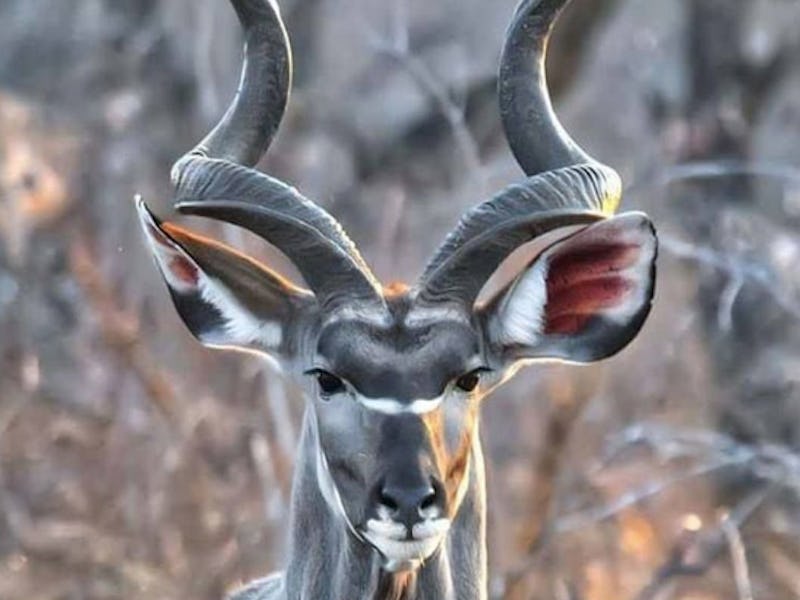Two Scientific Reasons Why This Sexy Kudu Is the Internet's New Crush

Cuffing season has arrived, and so has a new thirst trap that the internet can’t get enough of. Sorry Noah Centineo, teen heartthrobs are out and male kudus are in. A Twitter photo of a striking male kudu with a penetrating gaze and sculpted cheekbones is taking the internet by storm with its sheer sexiness, in turn calling into question why we can’t help but think some animals are hot.
We tackled this same moral conundrum in 2016 when people went wild for Shabani, the handsome gorilla from Japan. Explaining why some humans couldn’t help but find Shabani so attractive, New York University associate professor of anthropology Shara Bailey, Ph.D., outlined two reasons to Inverse: First, he’s clearly healthy, and healthiness is attractive; second, humans naturally tend to anthropomorphize, looking for human traits in non-human things.
Taking another look at the sexy kudu, first posted to Twitter by Stumbler on October 18, it’s not hard to see both those factors at play.
Healthy = Sexy
Beauty is in the eye of the beholder, but biologically speaking it’s fair to argue that healthy individuals are generally more attractive than unhealthy ones because they make better mates. In regard to Shabani, Bailey said: “He’s hot. One healthy gorilla.” Likewise, the viral kudu does not appear to have any of the visible diseases known to affect the species, like rabies or “lumpy skin disease.” He’s unblemished, well fed, clear-eyed, and, importantly, well-horned.
Males of both the lesser kudu and the greater kudu species are known (and hunted) for their majestic, twisting horns, which they use to fight each other during the mating season. Losers sometimes get their horns broken off in battle, and sometimes individuals are born with deformed horns, like the individual below. But not the internet’s kudu, who certainly appears to be one healthy, sexy beast.
Some individuals are born with misshapen horns, which might cause difficulty during battles over mates.
Anthropomorphism
Twitter users have been very vocal about the human characteristics they admire in the sexy kudu’s face. “His Cheekbones higher than the Sistine Chapel,” one user said. “That face though and those beautiful ears!” said another. “Eyebrows on fleek,” quipped one more.
SpiritualSandra summed it up by tweeting: “This Kudu is so unusual it has almost a human face.”
A different, but no less sexy, kudu.
Psychologists have accepted the tendency to anthropomorphize as a basic characteristic of human nature. In his book Mindwise: How We Understand What Others Think, Believe, Feel, and Want, University of Chicago professor of behavioral science and anthropomorphism expert Nicholas Epley, Ph.D., explains that we do so partially because our hyper-social brains are wired to seek out faces and connect with the things that we like. In a 2016 interview with Quartz, he said: “Historically, anthropomorphizing has been treated as a sign of childishness or stupidity, but it’s actually a natural byproduct of the tendency that makes humans uniquely smart on this planet.”
Made aware of these tendencies, we realize it’s not so much the kudu that we find sexy but the human features we see on it. Its high, sculpted cheekbones; steady gaze; strong brow; and probing expression are all considered attractive in at least some human cultures.
The symmetry of its face may also add to its appeal. Some studies have shown that symmetry is a hallmark of healthy development in the fetus, which in turn signals health — and a prospective new mate.
Of course, human attraction is as much a product of culture, environment, and personal traits as it is biology, so this kudu isn’t for everyone. If he’s not the beast for you, we hear Shabani’s still single.